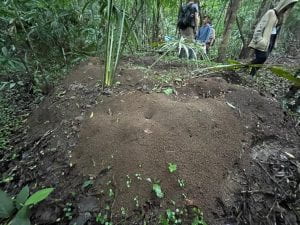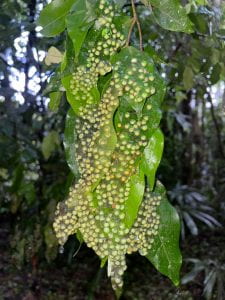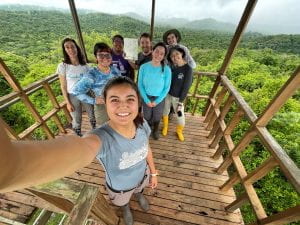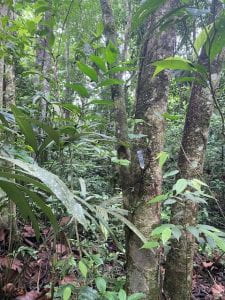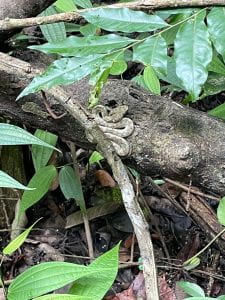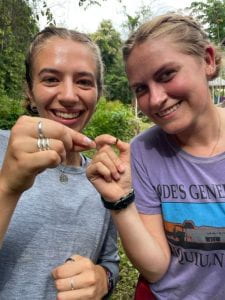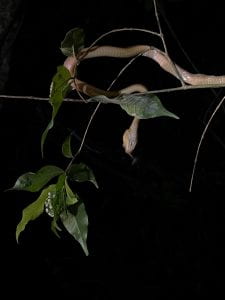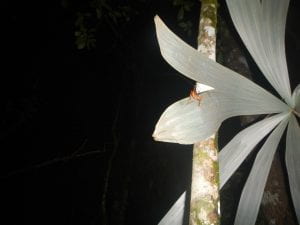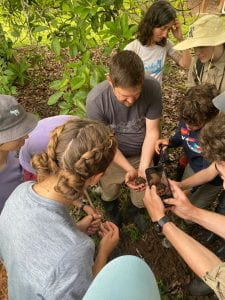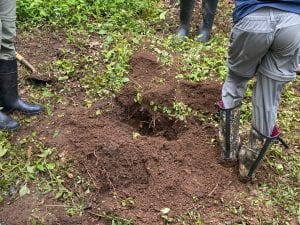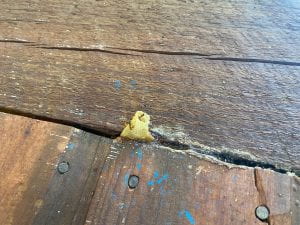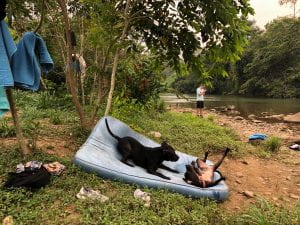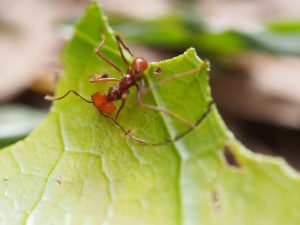This morning we analyzed results from our cecropia tree experiment, studying how the defense mechanisms in colonized vs un-colonized cecropia trees differ, if they do differ at all. Right after, we jumped into a fascinating presentation done by the head of Friends for Conservation Development (FCD), Rafael Manzanero. It was fascinating to hear about the history of the organization: starting with humble roots as a group of friends who would hike for days in the Chiquibul forest, documenting their findings, to a significant NGO with millions of dollars in funding.
As I am interested in attending law school after graduating, I was particularly interested in learning about the ethical and legal dilemas that FCD has faced over time. He explained how poor people are often the ones involved in illegal rainforest activities such as smuggling, cattle ranching, and drug cultivation, and that sometimes FCD is forced with tough decisions surrounding law enforcement. Their primary mission is always to protect the rainforest, but it can get tricky when someone is caught with only a couple dollars worth of illegal contraband on them and no other methods of securing income. Although this can be difficult, he noted a positive: this dilema has generated greater concern among the international community surrounding rainforest conservation. Yet, due to the lack of a clear border between Guatemala and Belize, it is tricky and complicated to enforce any guidelines. Territorial disputes are currently before the Belizean appellate court, but it is hard to make definite laws when persons are found operating illegally on the Beilze-Guatemala adjacency zone.
One specific issue that is currently facing the Belizean government has to do with cattle ranchers raising cattle within the Chiquibul forest. Rafael posed the question to us: without using lethal force, how can the cattle ranchers be moved? He noted that there are potential connections between the cattle ranchers and drug cultivators, so it is challenging to incentivize the ranchers to re-locate. These complex issues made me interested in researching more in the field of environmental law, as I had previously only heard from the perspective of big oil and gas lawyers.
As a fun little break from our presentations, we hung out with a stick bug outside the classroom! He loved climbing up our arms and on our heads!
The morning taxon presentations featured formidicae and epiphytes in Belize. Honestly, ants have been my absolute favorite taxon to learn about on this trip so far. I was fascinated by the zombie fungus that can sometimes infect ants. Apparently, the fugus can infect ants and demand them to climb to a specific height on trees, sprout a mushroom out of the ants, and then spread to other ants through air-borne spores. Further, when ants figure out that one of their kind is infected with a fungus, they will quarantine the ant in a chamber of the colony on its own. Also, there are certain species of cockroaches that will sometimes copy the scent of certain ants and live in the colony their entire lives. Epiphytes are a bit less naturally intriguing to me, but I still enjoyed learning about the plant mutualisms. Today’s lecture highlighted plant-animal interactions, and it was interesting to learn a bit more about some of the interactions we have been observing in the field such as acacia trees and pseudomyrmex ants, leaf cutter ant mutualism with fungi, and Belizean orchid bees with orchids.
This afternoon, we did a deep dive into leaf cutter ants and disrupted two colonies: one young and one old. I learned so much about them and specifically their queens! Apparently, leaf cutter ants partake in a unique (never been seen before) mating ritual only once in their lifetimes where the queen will fly up into the air, mate, and then return to the ground to start their colony. With the first colony we disrupted, the younger one, there was an ant with her fungi, which allegedly goes for around $1,000 in insect trade. The next colony we disrupted, the older one, was much much larger and the ants fought back when we uncovered them. On top of all this, we even spotted one of the cockroaches, which appeared to be a giant cockroach, that hang out with leaf cutter ants! I could hardly believe my eyes when he came crawling out of the ant hill. It was excreting a sticky substance off of its back to defend itself.
Tonight we went for a night hike and saw a lot of crazy bugs! We found a cockroach in some leaves that appeared to be either a brown-banded cockroach or oriental cockroach, though I am still a bit unsure. I also saw a smokybrown cockroach on a branch.
Overall, it was a super fascinating day and I loved learning more about this awesome species.
-Emily



















